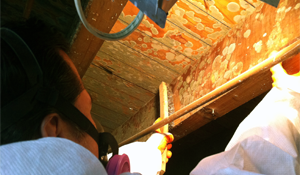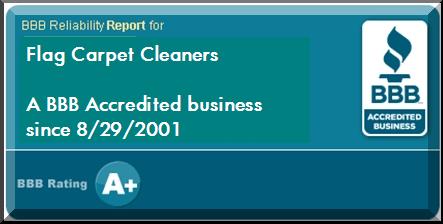Mold Damage Removal On Long Island

Significant mold growth may require professional mold remediation and removal of affected building materials. A
conservative strategy is to discard any building materials saturated by
the water intrusion or having visible mold growth.
The purpose of the clean-up process is to eliminate the mold and fungal
growth and to remove contaminated materials. As a general rule, simply
killing the mold with a biocide is not enough. The mold must be removed
since the chemicals and proteins, which cause a reaction in humans, are
still present even in dead mold
What needs to be done?
Some materials will need to
be disposed off, such as ceiling tiles, insulation, wallboards, carpet,
soft furnishings, clothes, papers and books. Non-porous metals, glass and
hard plastics may be cleaned and reused. Depending on the degree of mold
damage, semi porous wood may be cleaned up by drying, sanding and treating
with anti microbial solvent before reusing. In addition your heating,
ventilation, air conditioning and crawl spaces will be dried, cleaned and
then treated with Hepa filtration to remove remaining mold particles.
Our professional in house technicians follow our well planned mold
abatement process to take care of mold clean up and repair to your
satisfaction. There are certain steps we follow that insure we get your
mold clean up job done right. First the contaminated area is sealed off
using plastic sheeting, then we create negative air pressure to direct the
mold to prevent mold spores from spreading to other parts of the house,
directing the mold away from indoor space.
Mold Remediation Project
1. All Workers to be
Properly Protected in PPE Equipment, Gloves, Tyvek Suits, Respirators,
etc.
2. Set-up critical barriers to prevent cross contamination to structure
and also achieve negative air.
3. All openings such as doorways, windows, vents, airways to be covered
with 6 mil-poly. This will insure negative air can be maintained. Full
containment.
4. Set-up Negative Air Machine to minimize airflow 4 to 8 ACH (air
changes per hour).
5. Pre-clean (HEPA vacuum) structure and remove all loose structural
debris in doubled (6-Mil) sealed
plastic bags.
6. The use of electric blower inside each containment area to suspend
fine particulates so that they
are captured by a HEPA filter.
7. Demolition of contaminated structure, then double bagged and removed
to dumpster daily.
8. Scrape, wire brush, orbital sanding, Media and or Dry ice blasting to
remove any visible mold growth
from structural materials.
9. HEPA vacuum, biowash(wet wipe) then HEPA vacuum 2nd time (dust free
environment). Clean
and encapsulate any structure members affected by mold. (organic surfaces)
10.HEPA vacuum, double bag and remove all unsalvageable contents to
dumpster.
11.Preclean salvageable contents (HEPA vacuum)
12.HEPA vacuum, wet wipe with biowash. Then HEPA vacuum all contents
again.
13.Removal of all personal possessions as well as soft goods, i.e.
clothing, bedding, curtains etc.
Clothing may be cleaned using standard laundering products.
14.Maintain Negative Air Machine and Air Scrubbers throughout course of
job.
15.HEPA Air filtration to run for a minimum of 72 hours after abatement is
completed, and then shut
down for a minimum of 24 hours before post remediation testing.
16.Break down of containment barriers
